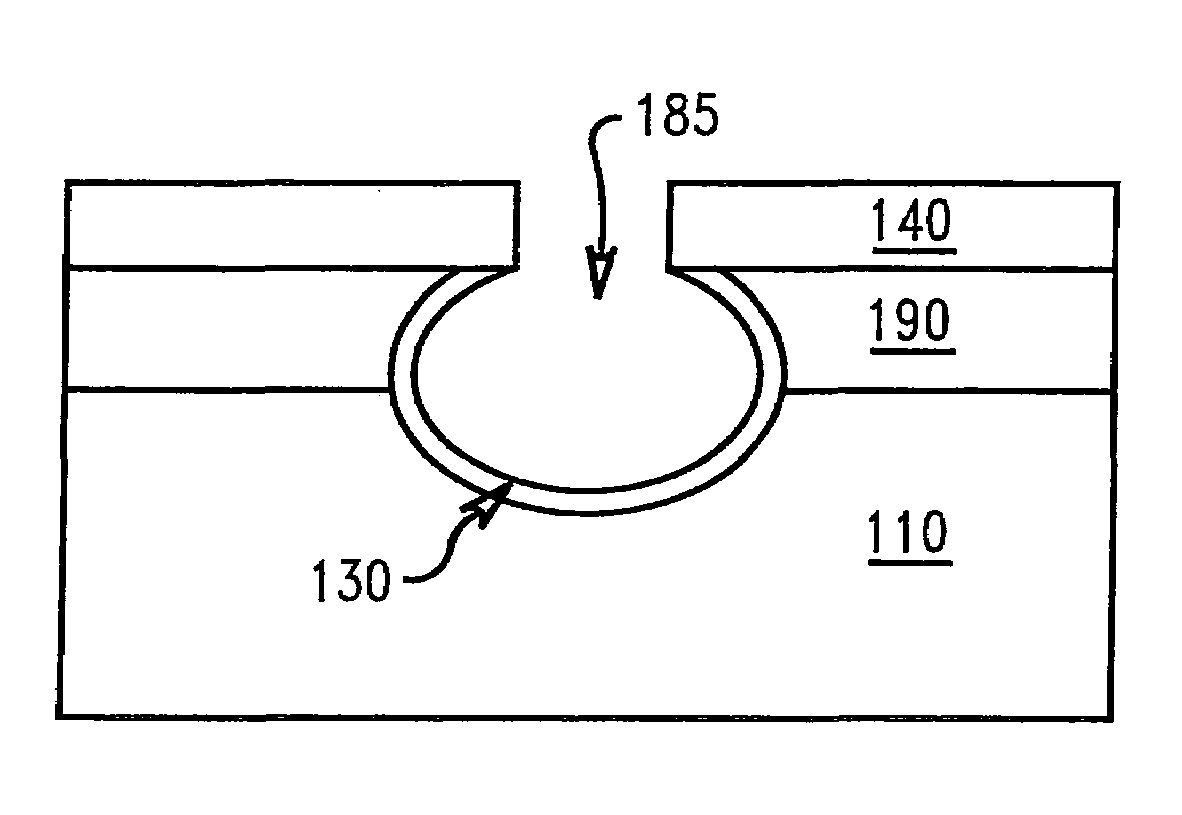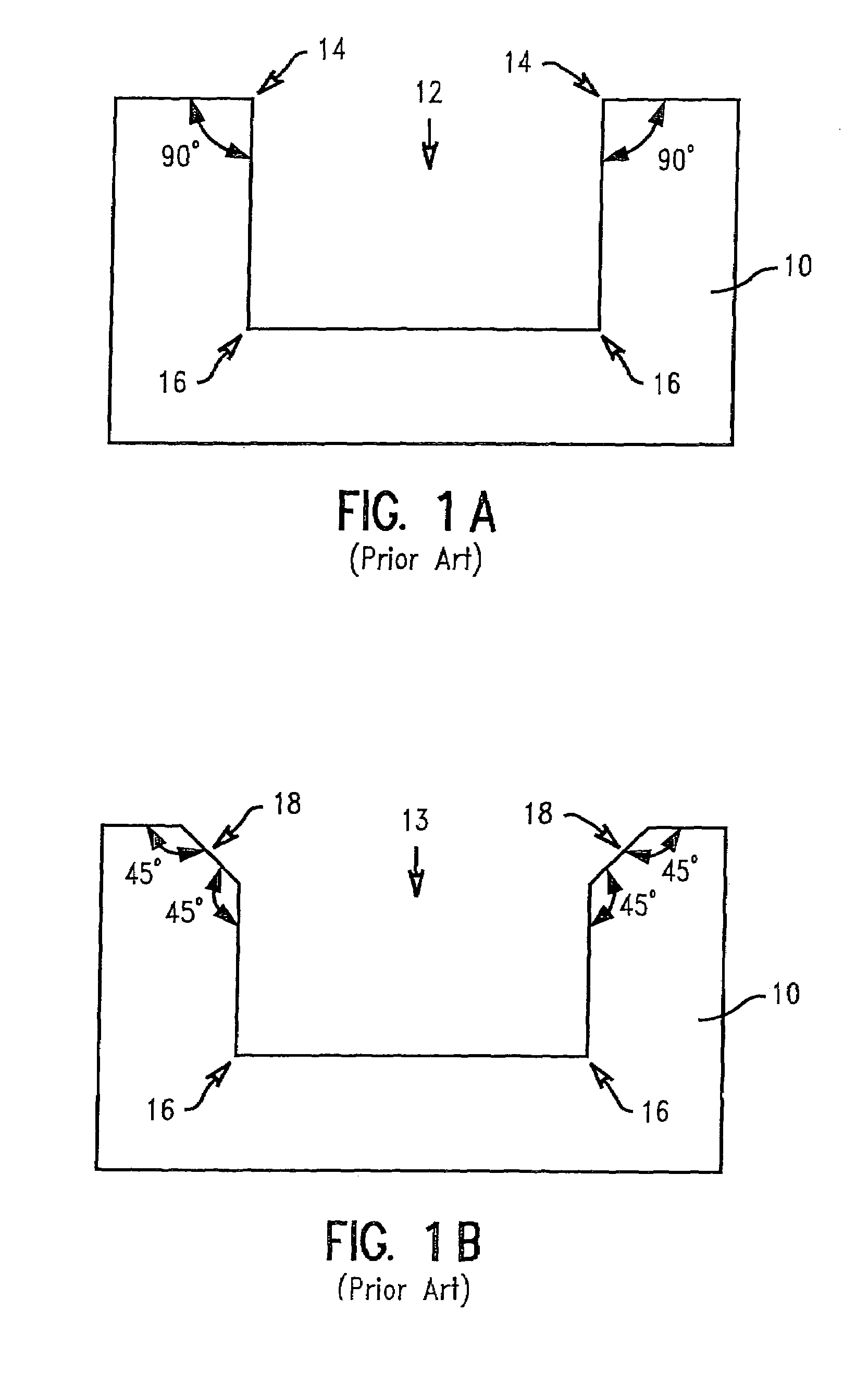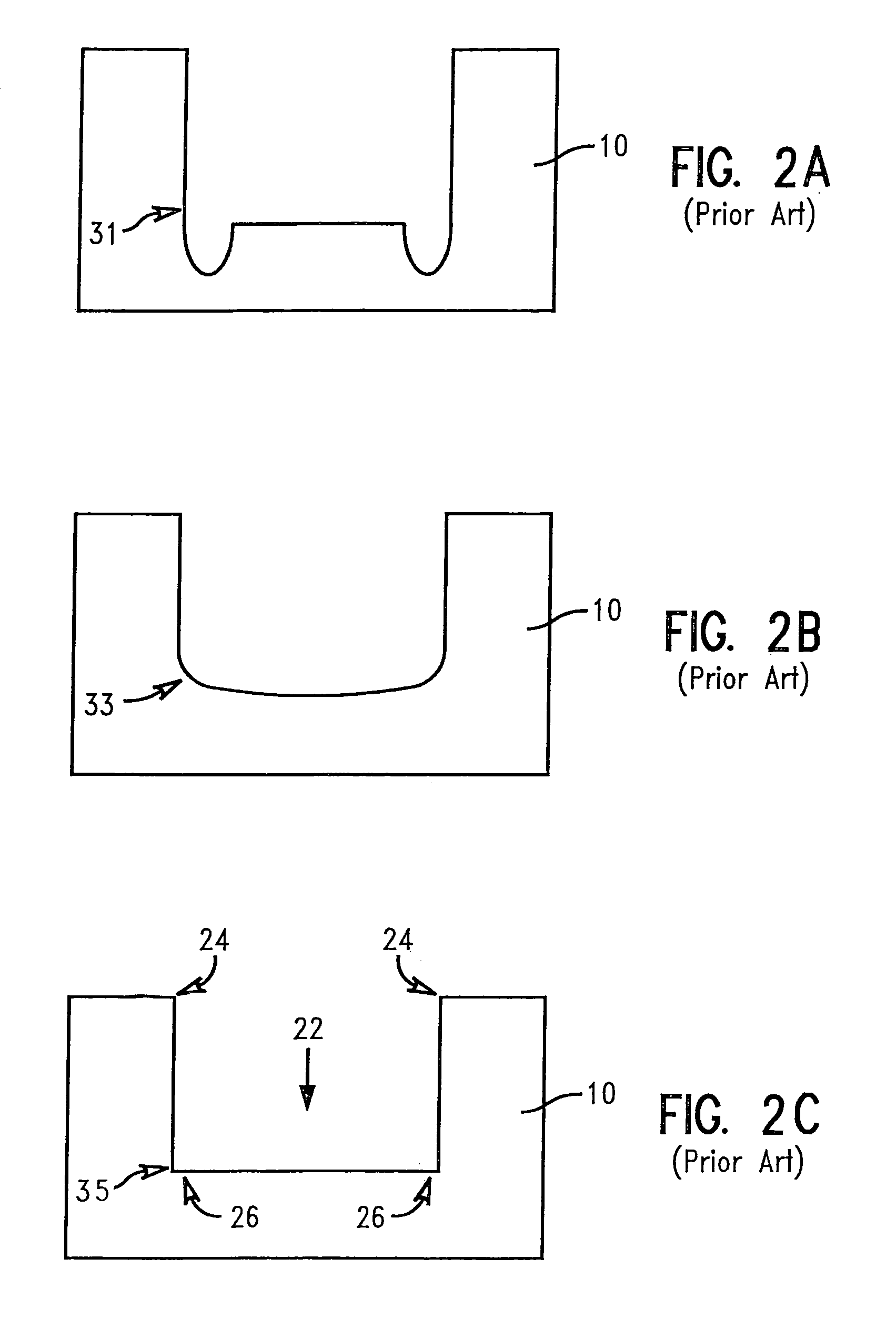Interconnect structure improvements
a technology of interconnections and structures, applied in the field ofsemiconductor devices, can solve the problems of increasing the stress on the dielectric layer, cracking or damage of low-k dielectric materials, and mechanical weakening of the insulation material, and achieve the effect of high conductivity
- Summary
- Abstract
- Description
- Claims
- Application Information
AI Technical Summary
Benefits of technology
Problems solved by technology
Method used
Image
Examples
Embodiment Construction
[0029]In describing the preferred embodiment of the present invention, reference will be made herein to FIGS. 3A–5C of the drawings in which like numerals refer to like features of the invention.
[0030]The present invention provides methods of forming and the interconnect structures (IC) formed having half cylindrical, substantially cylindrical, or cylindrical conductors, preferably wires. These half cylindrical, substantially cylindrical, or cylindrical wires advantageously reduce the line-to-line capacitance between neighboring conductors, reduce mechanical stresses induced on the IC, and as such, increase the overall mechanical strength of the IC. It should be appreciated that the wires of the present invention, with half cylindrical or cylindrical cross-sectional shapes, are understood to be nearly or approximately shaped as described and not ideal geometric half cylinders or cylinders.
[0031]As the conductors of the invention are formed with half cylindrical, substantially cylind...
PUM
 Login to View More
Login to View More Abstract
Description
Claims
Application Information
 Login to View More
Login to View More - R&D
- Intellectual Property
- Life Sciences
- Materials
- Tech Scout
- Unparalleled Data Quality
- Higher Quality Content
- 60% Fewer Hallucinations
Browse by: Latest US Patents, China's latest patents, Technical Efficacy Thesaurus, Application Domain, Technology Topic, Popular Technical Reports.
© 2025 PatSnap. All rights reserved.Legal|Privacy policy|Modern Slavery Act Transparency Statement|Sitemap|About US| Contact US: help@patsnap.com



